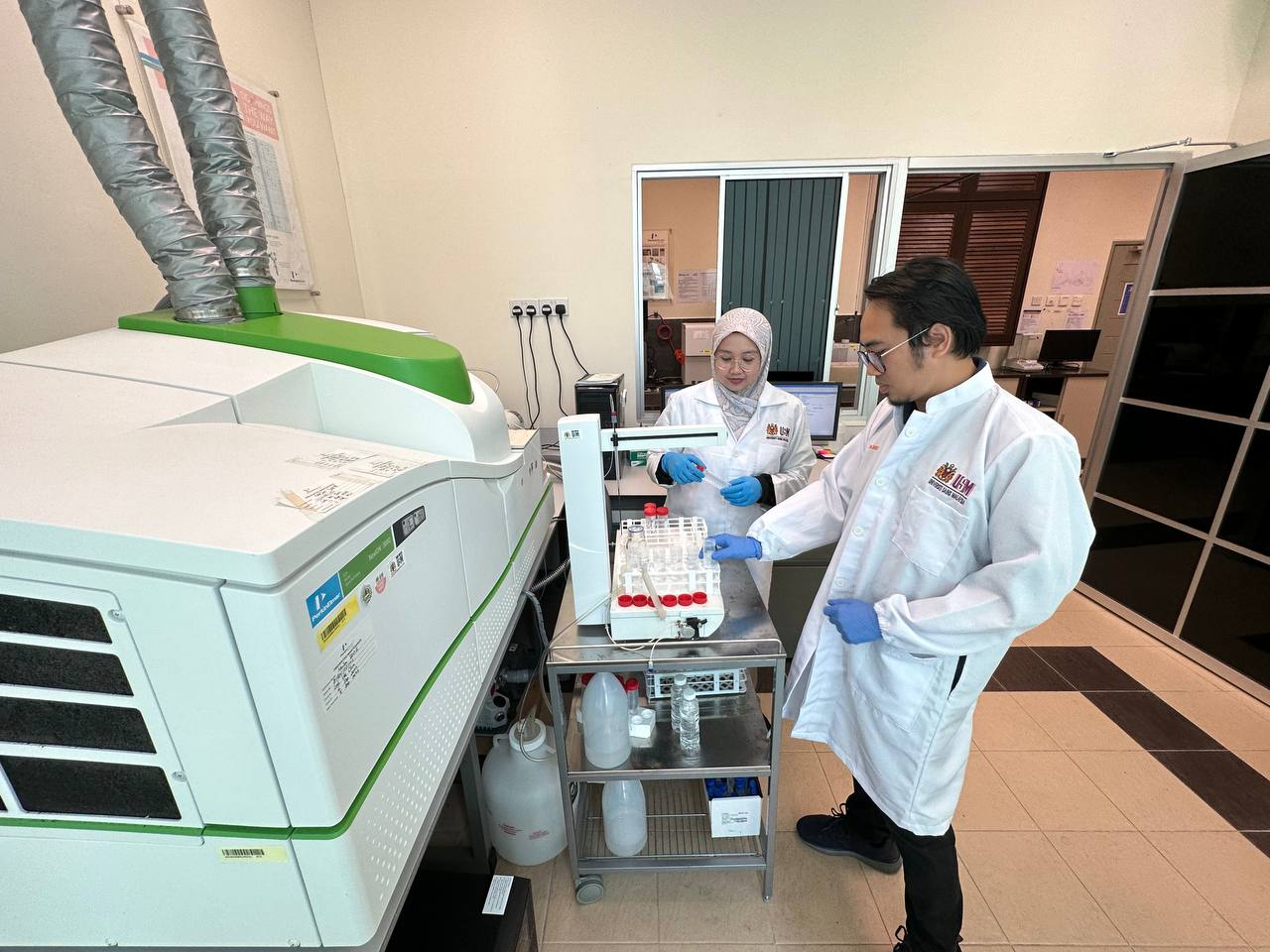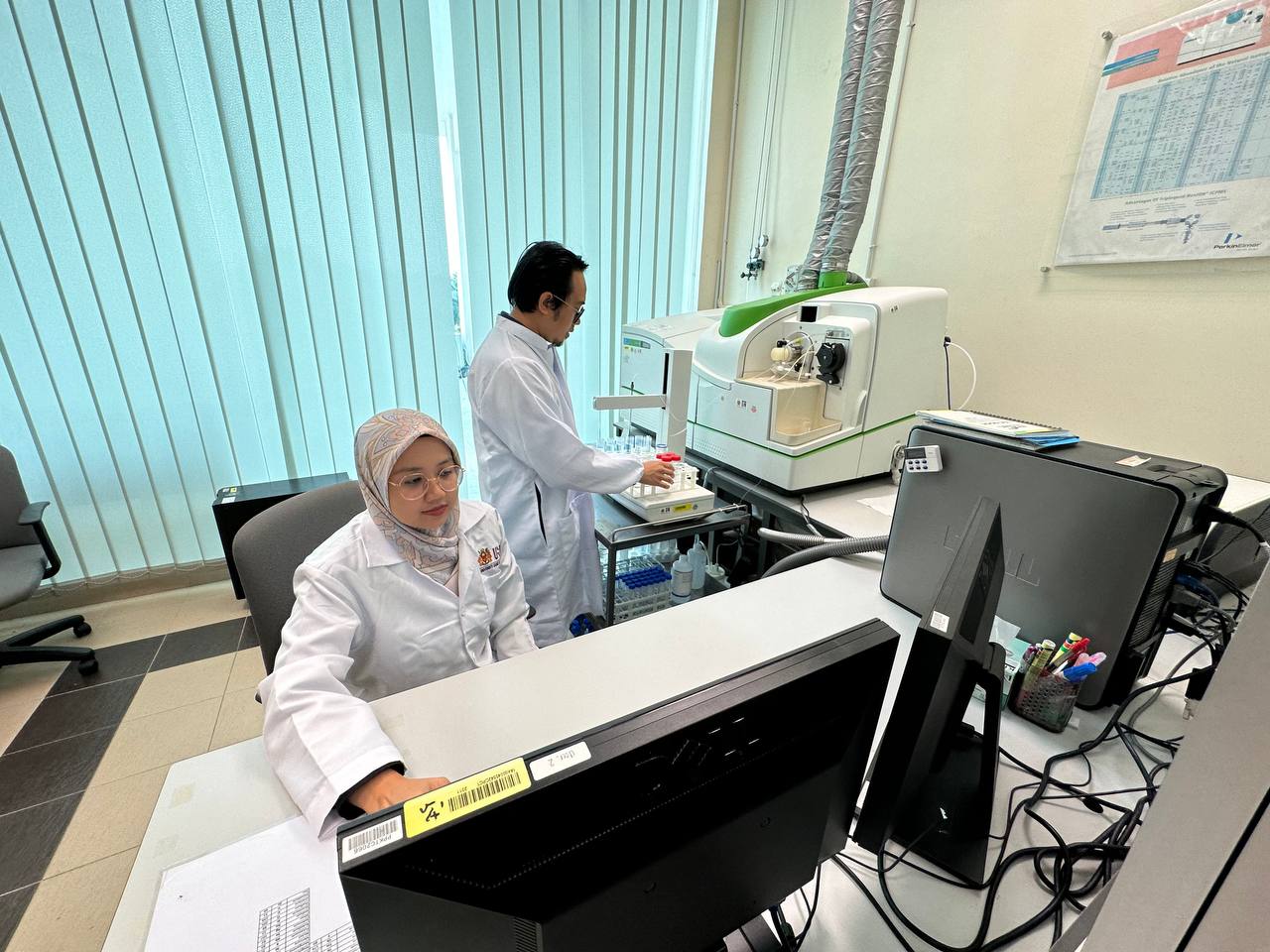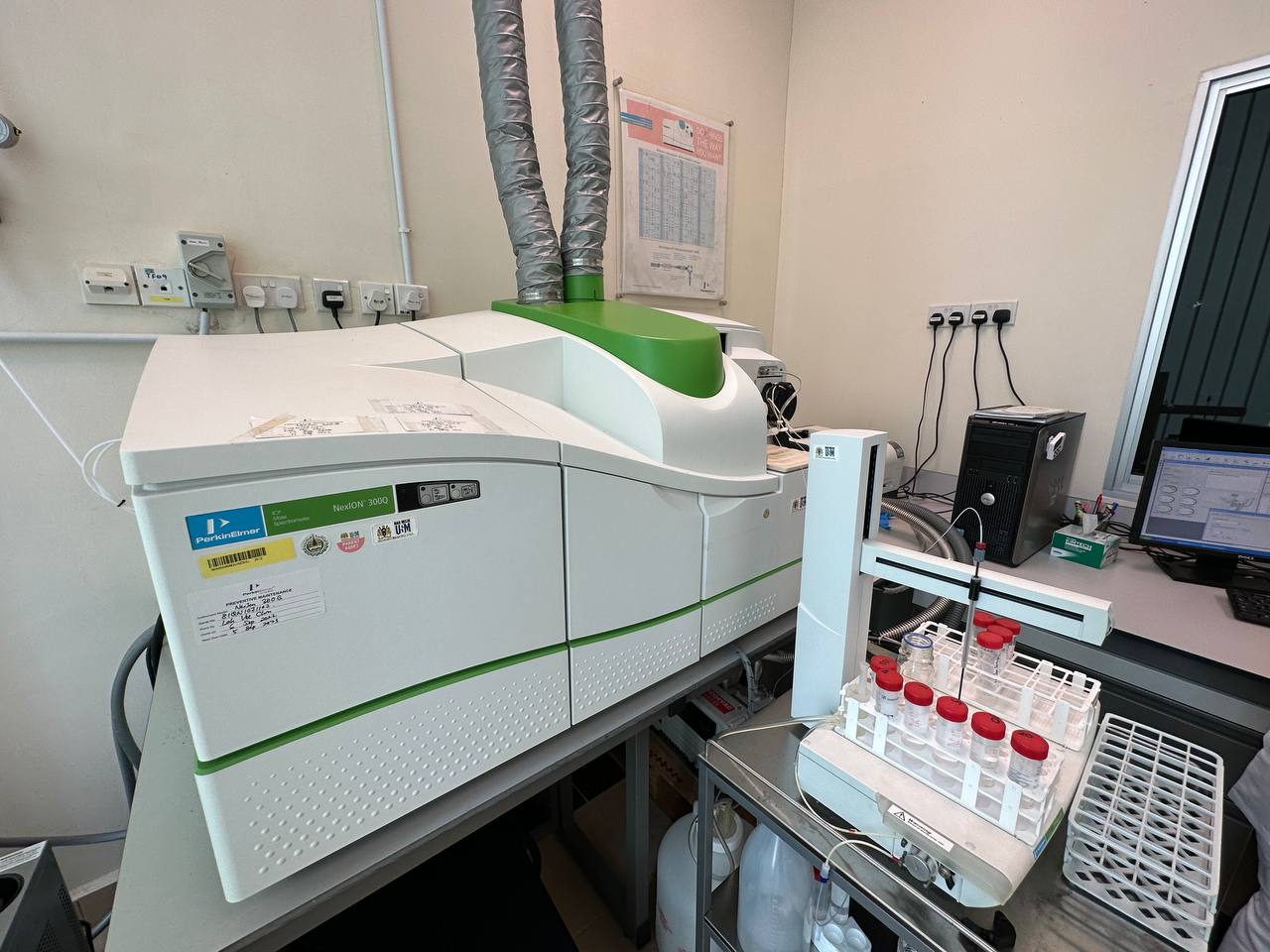


Laboratory Equipment & Services Information System
by Centralized Laboratory Management Office (CeLMO)
Everything in our environment is composed of various elemental combinations. Inductively coupled plasma mass spectrometry (ICP-MS) is a technology that is frequently used by analysts to determine which elements are present in each material. ICP-MS is an elemental analysis technique, meaning it is used to measure elements, rather than the molecules and compounds.
ICP-MS transforms the material into ions using an argon (Ar) plasma, or the ICP, which is then analyzed using a mass spectrometer, or the MS. Like inductively coupled plasma optical emission spectroscopy (ICP-OES), ICP-MS examines the elements (ions) directly, while ICP-OES measures the light emitted from elements as they travel through the plasma using an optical spectrometer. Both methods analyze several elements in a sample quickly, however ICP-MS is a preferable option for trace element analysis because it has significantly lower detection limits than ICP-OES.
(A) SPECIAL FEATURES
- Universal cell technology (Standard Mode) – The NexION 300’s cell is actively vented to remove residual gases. This enables the instrument to run in true Standard mode, so none of the decreased sensitivity encountered with passively vented system. Standard mode can provide sensitivity equal to that of Collision or Reaction mode when done properly.
- Triple cone interface – Produces the most tightly focused ion beam in the industry, reducing build-up on internal components (particularly the Quadrapole Ion Deflector) so maintenance and cleaning are minimized.
- Quadrupole ion deflector – Allows only ions of a specified mass to pass into the Universal Cell, enhancing sensitivity while keeping the cell clean – making it the only ICP-MS on the market with a cell that never needs cleaning or replacing.
- Fastest-scanning quadrapole in the industry (>5000 amu/sec) – Offers the fastest peak hopping and highest analytical mass range available (all way up tu 280 amu).
- Simultaneous dual mode (analog/digital) detector – Provides over nine orders of dynamic range and measures both high- and low-level analytes simultaneously. Also delivers the fastest data acquisition rates of any ICP-MS instrument on the market, making the NexION 300 an ideal for the emerging nanomaterials field.
(B) APPLICATIONS
- Chemical Analysis
- Contamination
- Elemental Analysis
- Failure Analysis
- Raw Materials
- Waste
- Drinking and Process Water
- Environmental Measurements
- Mining, Rocks, and Minerals
- Food and Beverages
- Impurities in Drugs and Pharmaceuticals
(C) SAMPLE REQUIREMENTS
- Liquid
- Solid – can be digest using Microwave Digestion
- Detection of elements from Lithium, Li to Uranium, U including different isotopes at parts per billion (ppb) level.
- Heavy metal content determination
- Manufacturer
- Perkin Elmer
- Brand
- Perkin Elmer
- Model
- NexION 300Q
- Year Manufactured
- 2010
- Year Procured
- 2011
- Department
- PUSAT PENYELIDIKAN SAINS DAN KEJURUTERAAN (SERC)
- Location
- Pusat Penyelidikan Sains Dan Kejuruteraan (serc) > Aras 1
- Date Registered LESIS
- 15/03/2024
- Category
- Research Equipment
- Function
- Booking, Testing,
- Category
- Staff operated
- Equipment Status
- Good
Person In-Charge





